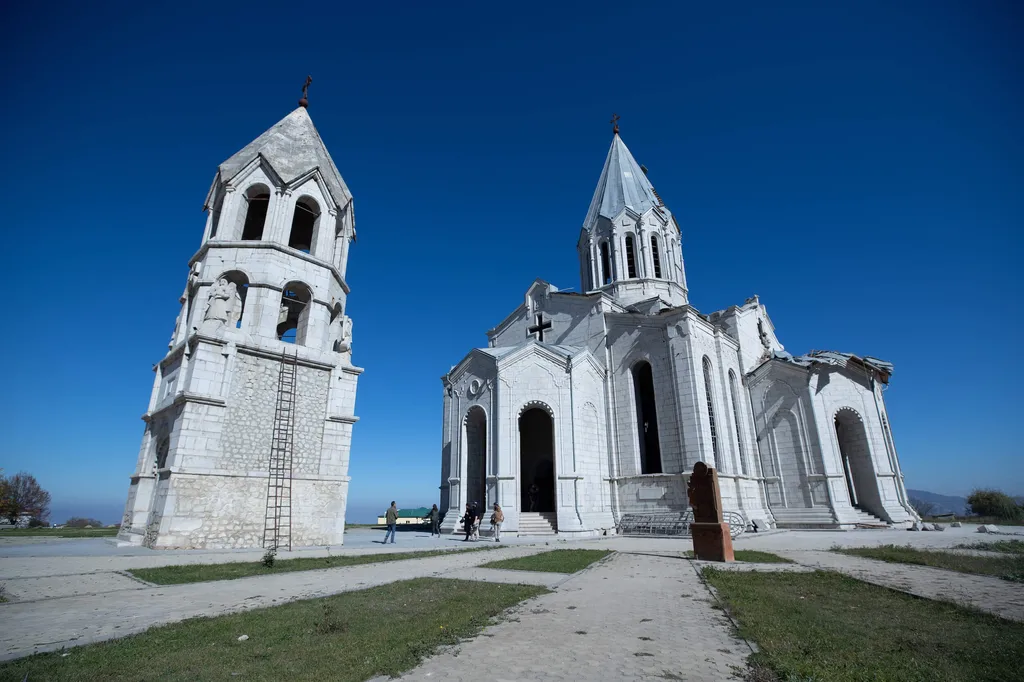In the heart of the Caucasus, a silent war is being waged—not with bullets and bombs, but with chisels, bulldozers, and a deliberate erasure of history. The Armenian architectural heritage of Artsakh, also known as Nagorno-Karabakh, is under siege, and a new study published in the Journal of Architectural and Engineering Research (Architektura y Inzhenernye Issledovaniya) sheds light on the systematic destruction of cultural monuments in the region. The lead author, Lyuba Kirakosyan, an associate professor at the National University of Architecture and Construction of Armenia, has documented the alarming trend of cultural genocide, which has accelerated since the 2020 Nagorno-Karabakh war.
The study reveals that Azerbaijan’s actions go beyond territorial conquest, aiming to obliterate the Armenian identity, history, and cultural landscape. “Architectural monuments are tangible evidence of historical Armenian presence in these territories,” Kirakosyan explains. “They stand as a cultural obstacle to Azerbaijan’s agenda of erasure.” The deliberate destruction of Armenian cultural values and historical heritage is not a new phenomenon. For over a century, even during peacetime, Armenian Christian heritage in regions such as Nakhichevan and Nagorno-Karabakh has suffered irreversible losses. However, the scale of destruction has intensified, particularly following the recent conflict.
The vandalism takes various forms, including physical destruction, appropriation, disfigurement, desecration, and changing the primary function of tangible heritage. Notable examples include the Holy All Savior Ghazanchetsots Church and St. Hovhannes Mkrtich Church (St. John the Baptist), or Kanach Zham (Green Church), in Shushi, as well as the Gandzasar, Dadivank, and Amaras monastery complexes. “These actions are not merely acts of vandalism,” Kirakosyan emphasizes. “They are part of a broader strategy to rewrite history and erase the Armenian presence in the region.”
The commercial impacts of this cultural destruction are profound. The energy sector, which has been increasingly investing in the Caucasus region, relies on stable political and cultural environments. The systematic erasure of Armenian heritage undermines the potential for sustainable development and investment. “The preservation of cultural heritage is not just a matter of historical importance,” Kirakosyan notes. “It is also a commercial imperative. Investors need to recognize the value of cultural preservation in fostering stable and prosperous communities.”
The study highlights the principles of authenticity, integrity, and the importance of safeguarding the Armenian historical legacy in the international system for the preservation of the Christian heritage of Artsakh. Initiatives aimed at preserving the medieval heritage of the region are crucial for maintaining the cultural and commercial fabric of the area.
As the world watches the unfolding crisis in Artsakh, the research by Lyuba Kirakosyan serves as a stark reminder of the importance of cultural preservation. The destruction of architectural heritage is not just a loss for Armenia but a loss for global cultural heritage. The commercial sector, particularly the energy industry, must recognize the interconnectedness of cultural preservation and economic stability. The future of Artsakh’s heritage hangs in the balance, and the actions taken today will shape the cultural and commercial landscape for generations to come.

